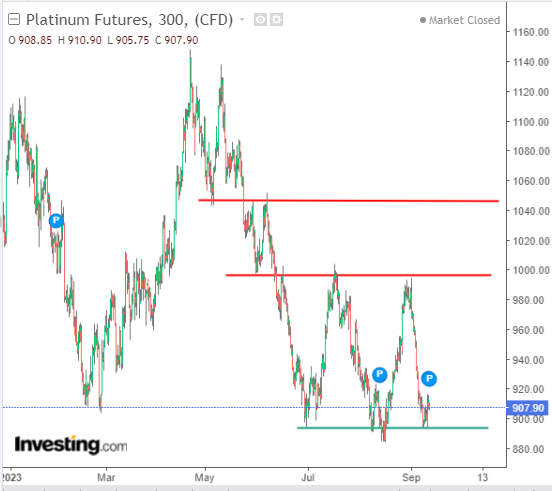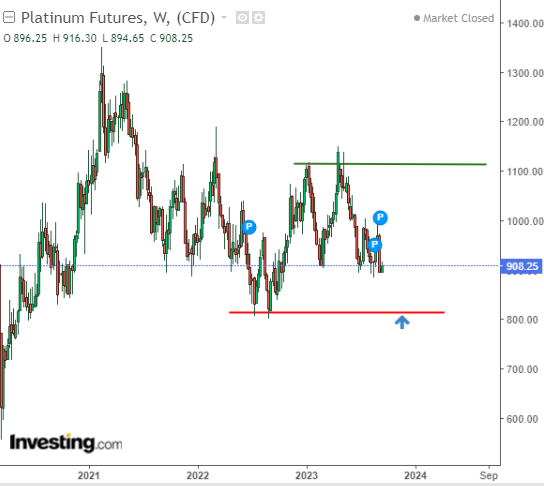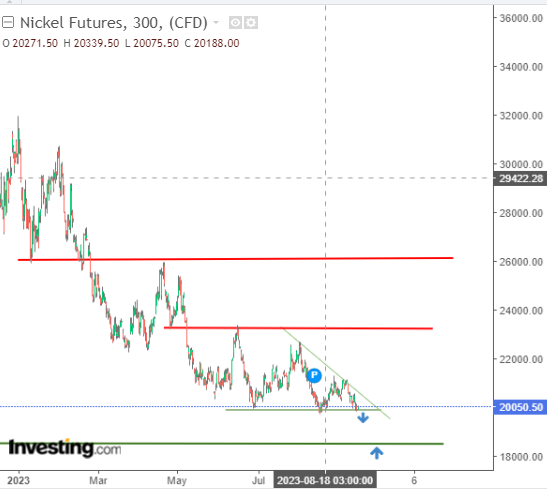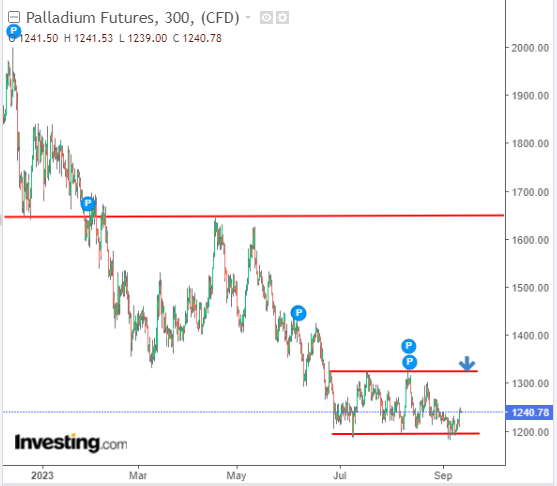- Record shortages are expected in the platinum market
- Meanwhile, the US Department of Defense has committed to increasing nickel supply
- Palladium prices are at their lowest since 2018
The year 2023 has been challenging for industrial metals, especially platinum, palladium, and nickel which have seen declines of -15.57%, -30.76%, and -31.76% respectively since the beginning of the year.
This decline can be attributed primarily to the Federal Reserve's hawkish monetary policy, which has led to a strong U.S. dollar and increased U.S. bond yields.
These factors have created an unfavorable environment for the commodities market. However, looking at the longer term, commodities might face upward pressure due to global shortages driven by the growth of eletromobility and renewable energy sources, which are increasing demand in these sectors.
Consequently, it's worth considering the possibility of long positions that could benefit from a potential reversal in the Fed's monetary policy.
Platinum: Can Bulls Defend Local Lows?
In recent months, platinum prices have been characterized by uncertainty regarding their direction, resulting in a consolidation phase within the $890-$1000 range. In the short term, the stronger dollar is acting as a headwind for buyers, leading to a test of the lower boundary of this sideways trend.
If the selling pressure continues to prevail, the next target will be the 2022 lows, situated slightly above $800. It's important to note that today's U.S. inflation data can have a significant impact on the valuation of metals. Higher-than-expected inflation readings could further support the bearish scenario.

In the medium and long term, the shortage of platinum could play a crucial role in the potential development of an upward trend. According to the World Platinum Council, shortages in 2023 may reach up to one million ounces, driven primarily by a 27% increase in demand while supply remains unchanged.
Nickel: Could Price Declines Continue?
As for nickel, there's a possibility that price declines could continue. The increasing pressure on the local support level, which is hovering around the significant psychological barrier of $20,000, might lead to a downward breakout in the coming days. This could materialize into a descending right-angled triangle formation. In such a scenario, a natural target for sellers would be the price lows in the vicinity of $18,000.

Sellers in the nickel market might find support in the recently signed agreement between the US Department of Defense and the Canadian company Talon Metals Corp, which is aimed at increasing metal production valued at more than $20 million. This project's primary objective is to boost production at a mine in Minnesota, potentially reducing the company's reliance on China or Russia for supply chains.
Palladium: Can it Break Out of Price Consolidation?
As for palladium, it shares many properties with platinum and is often used interchangeably in the industrial sector, particularly in the automotive industry. Early this month, we witnessed an unsuccessful attempt to break out of a consolidation pattern, resulting in new lows at levels not seen since 2018. Given a strong counter-attack by buyers, it's possible that the price will remain within a sideways trading range with a target near the upper band around $1,330-1,340.

If the influence of a stronger US dollar continues to weigh on the market, the downtrend in palladium might persist, with a potential challenge to the $1,100 area. However, it's worth noting that, similar to platinum, shortages in the market, estimated at less than a million ounces, could offer support to the bullish side in the long term.
***
Disclaimer: This article is written for informational purposes only; it does not constitute a solicitation, offer, advice, counseling or recommendation to invest as such it is not intended to incentivize the purchase of assets in any way. As a reminder, any type of assets, is evaluated from multiple points of view and is highly risky and therefore, any investment decision and the associated risk remains with the investor. The author does not own the stocks mentioned in the analysis.

